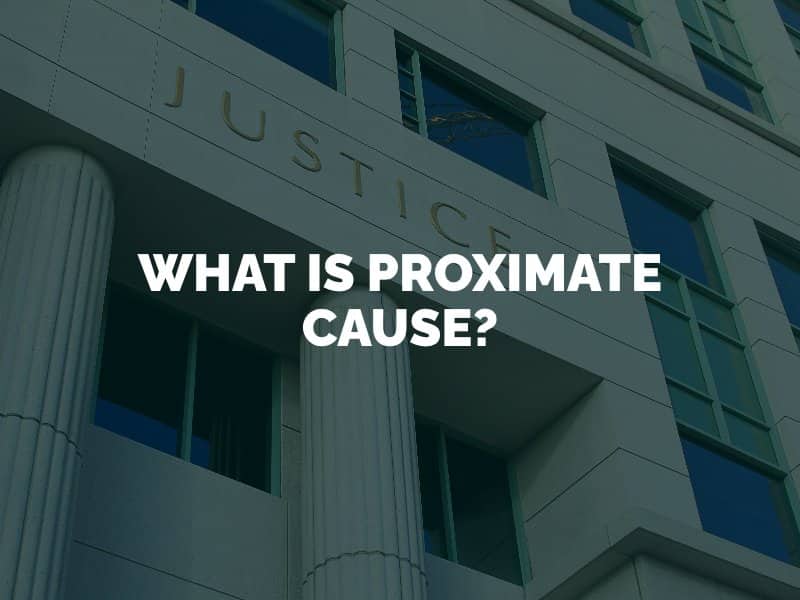If you need to file a personal injury claim in Colorado, you may encounter a lot of legal jargon. One phrase you might hear is “proximate cause.” This is important, as you will need to establish causation for your injuries as the plaintiff or filing party in your lawsuit. Learn more about what this means and when you might need a Denver personal injury lawyer to help you establish causation during your claim.

The definition of proximate cause, also referred to as legal cause, is the primary cause of a result. It is the incident that set everything else in motion; without this incident, the outcome would not have occurred. In personal injury law, proximate cause means the primary or substantial cause of a victim’s injuries or the damage being claimed. In Colorado, the jury instructions regarding proximate cause define “cause” as an act or failure to act that produces the claimed injury in a natural and probable sequence. In other words, an action that produced a foreseeable result.
Proximate cause is not the same thing as actual cause in a legal context. Actual cause, or cause in fact, is the event that directly and immediately caused the result. An example of the difference between the two can be seen in a Denver car accident case where a pedestrian is struck by a vehicle when walking in a crosswalk. The vehicle striking the pedestrian would be the actual cause of the victim’s injury. However, if it is discovered that a second vehicle rear-ended the first and caused it to enter the crosswalk, this would be the proximate cause of the accident.
When you bring a personal injury claim against a person or party, you are responsible for proving the elements needed to find the defendant at fault or liable for causing your injury. This is known as the burden of proof. Different types of legal cases come with different burdens of proof.
In a criminal case, the burden is proof beyond a reasonable doubt. This is the highest standard of proof. A civil lawsuit such as a personal injury claim, on the other hand, has the lowest burden of proof: a preponderance of the evidence. This means proof that the defendant is more likely than not responsible for your injury.
To win a personal injury claim, one of the things you must prove with at least a 51 percent certainty is proximate cause. Establishing proximate cause requires evidence showing a cause-and-effect relationship between the defendant’s actions and your accident or injury. You may need to enlist the help of a lawyer to find evidence to prove proximate cause.
Causation is the most difficult element to prove in a personal injury case. Establishing proximate cause often involves the “substantial factor” test. This test assesses whether the defendant’s actions were a major or significant factor in causing the injury to occur. If so, the defendant can be held liable for the injury, even if the defendant’s actions were not the only thing that caused the accident.
Actual cause, on the other hand, typically relies on the “but for” test. If the plaintiff’s injuries would not have happened but for the defendant’s negligence, the defendant will be liable. In personal injury law, it is possible to hold a defendant liable for an injury that he or she either caused or significantly contributed to; both are enough to establish causation. It is not enough, however, to show that the defendant’s actions were only a remote cause of the accident.